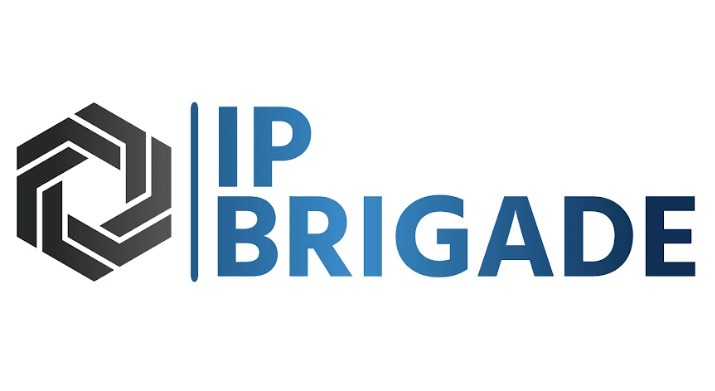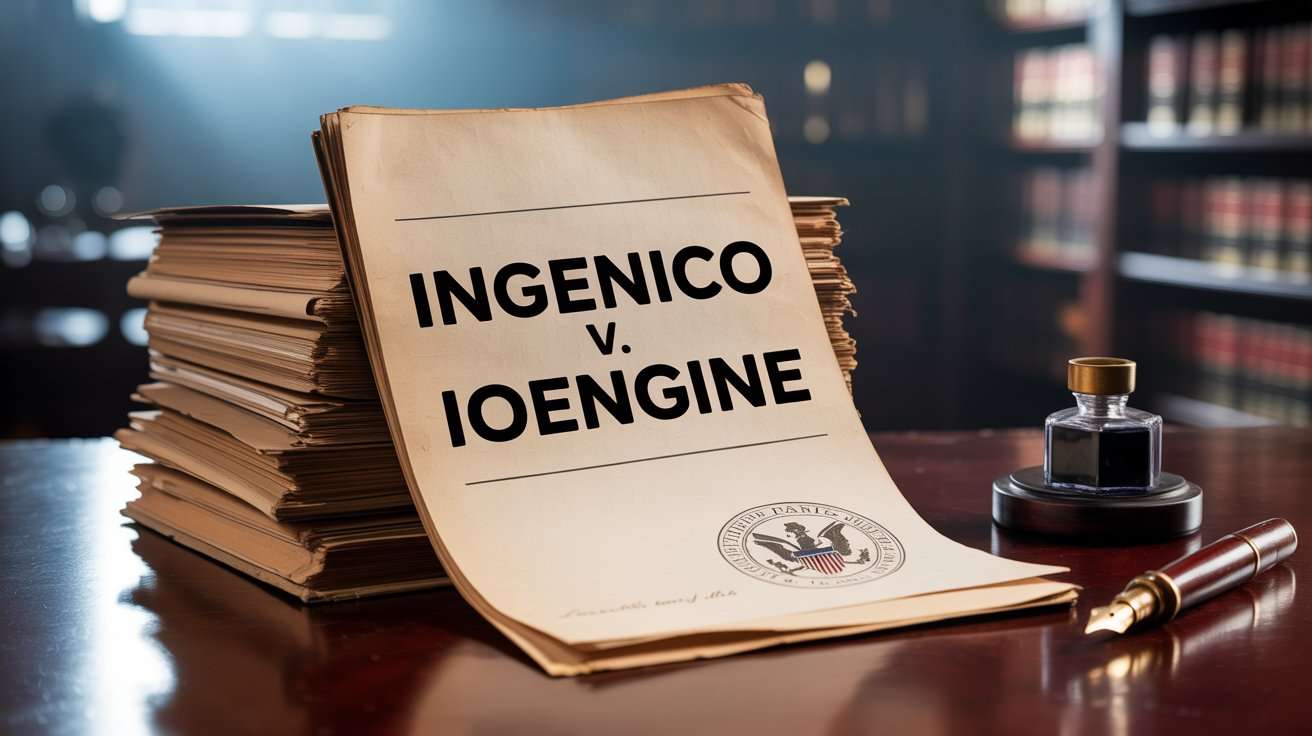On May 7, 2025, the United States Court of Appeals for the Federal Circuit issued a pivotal decision in Ingenico Inc. v. IOENGINE, LLC, significantly narrowing the scope of IPR estoppel under 35 U.S.C. §315(e)(2). The ruling clarified that IPR estoppel does not apply to invalidity arguments based on product prior art — such as public use or on-sale activities — and instead applies only to patents and printed publications.
This landmark interpretation reshapes how patent litigators will approach invalidity defenses in 2025 and beyond. By redefining what grounds are subject to estoppel, the Federal Circuit has effectively rebalanced the interplay between inter partes review (IPR) and district court litigation under the America Invents Act (AIA).
What Is IPR Estoppel Under §315(e)(2)?
Under 35 U.S.C. §315(e)(2), a petitioner who has received a final written decision in an IPR is stopped from asserting in court “that any ground raised by the petitioner or that the petitioner could have reasonably raised during that inter partes review renders the claim invalid.”
Historically, courts interpreted IPR estoppel broadly — meaning any prior art that could reasonably have been used in the IPR, whether or not actually raised, was barred in later litigation. The Ingenico v. IOENGINE decision narrows this interpretation. The court held that estoppel applies only to grounds that could have been raised in an IPR — i.e., those based on patents or printed publications — and not to product-based or physical evidence.
For a detailed breakdown of the legal language and its implications, see the Federal Circuit’s official opinion and the USPTO’s explanation of IPR procedures.
Case Background: Ingenico v. IOENGINE
Parties Involved:
Plaintiff: IOENGINE, LLC
Defendant: Ingenico Inc., a leading provider of payment terminals
Timeline Overview:
IOENGINE sued Ingenico for patent infringement.
Ingenico responded by filing an IPR petition challenging IOENGINE’s patents.
After the PTAB issued a final written decision, IOENGINE argued that IPR estoppel should prevent Ingenico from raising any invalidity grounds in district court, including those based on product prior art.
The Federal Circuit disagreed, ruling in Ingenico’s favor.
The Central Legal Question
The central issue before the court was:
Does IPR estoppel apply to non-documentary prior art, such as physical products or systems that were in public use or on sale before the patent’s critical date?
The Federal Circuit’s answer was no. Because IPR proceedings are statutorily limited to challenges “based on patents or printed publications,” IPR estoppel cannot bar arguments rooted in other types of prior art — such as devices demonstrated at trade shows, systems used in commerce, or products offered for sale.
The Federal Circuit’s Holding
The Federal Circuit ruled that §315(e)(2) IPR estoppel applies only to documentary evidence that could be used in an IPR. Consequently, defendants are free to raise invalidity arguments in court based on:
Devices publicly used before the filing date
Systems previously offered for sale
Product demonstrations or prototypes
In its opinion, the court emphasized the textual limits of the IPR statute:
“Congress deliberately restricted IPR proceedings to patents and printed publications. Extending estoppel to include product-based prior art would stretch the statute beyond its plain meaning.”
This statement confirms that IPR estoppel cannot extend to prior art that, by law, could not have been presented during the IPR process.
Implications for Patent Litigation Strategy
The Ingenico decision carries major strategic implications for patent litigators and defendants. It changes how attorneys plan and sequence their invalidity defenses — both in IPRs and in district court proceedings. If your company is navigating similar strategic questions, it’s wise to consult IP Brigade’s Patent Search Services to identify strong prior art early.
1. Renewed Importance of Product Prior Art
Defendants can now safely hold back product-based prior art for litigation without fear of being stopped. This increases the strategic value of maintaining physical evidence — such as commercial devices or product manuals — for later use.
By limiting IPR estoppel to patents and printed publications, the ruling ensures that real-world, non-documentary prior art remains a viable tool in litigation.
2. Tactical Dual-Path Defense
Expect more hybrid invalidity strategies: defendants will challenge patents in IPR using documentary art, while reserving product-based art for trial. Examples include:
Device manuals and user guides
Trade show demonstrations
Legacy systems or prototypes
Such dual-path approaches mitigate risk by diversifying invalidity defenses across venues. To execute such strategies effectively, partnering with a specialized patent drawing service can ensure your evidence is visually and legally airtight.
3. IPR Is No Longer a One-Stop Shop
This ruling weakens the idea of IPR as a complete substitute for litigation. Because IPR estoppel now covers only a subset of possible invalidity grounds, IPRs can no longer fully resolve all challenges. Petitioners must now make careful strategic decisions about which grounds to include in IPRs and which to reserve for court.
For related legal updates, explore our IPR Litigation Insights Blog.
4. Shift in Settlement Leverage
Plaintiffs can no longer assume that IPR estoppel wipes out all invalidity defenses after an IPR loss. Defendants who lose before the PTAB can still enter court armed with product-based prior art, retaining leverage during settlement discussions.
Expert Legal Commentary
Patent law firms and industry experts have been quick to react to the Ingenico v. IOENGINE decision.
Winston & Strawn LLP praised the ruling as consistent with the statute’s plain language, arguing that parties should not be penalized for failing to raise grounds unavailable in an IPR.
Gemini Law Group noted that the decision rebalances litigation dynamics in technology-heavy sectors, where product-based prior art — such as embedded systems and hardware prototypes — often plays a crucial role but lacks supporting documentation.
The World Intellectual Property Organization (WIPO) has long emphasized the importance of maintaining diverse forms of prior art evidence, aligning with the court’s reasoning here.
Historical Context: The Evolution of IPR Estoppel
The scope of IPR estoppel has evolved significantly since the America Invents Act introduced inter partes review in 2012:
2018 – Caltech v. Broadcom: Broad application — estoppel extended to all grounds reasonably available.
2020–2023: Courts divided on whether estoppel should cover all possible invalidity grounds.
2025 – Ingenico v. IOENGINE: Clear limitation — estoppel applies only to patents and printed publications.
This evolution reflects an ongoing tension between judicial efficiency and litigation fairness. The latest ruling tilts the balance toward fairness, ensuring that litigants are not penalized for procedural boundaries of the IPR system.
Practical Takeaways for Patent Defendants
Segment Prior Art Early: Identify which prior art fits within the IPR framework (patents and publications) and which should be reserved for court (products, systems, demonstrations).
Maintain Product Evidence: Preserve records, prototypes, and manuals that may serve as critical trial exhibits.
Update Litigation Strategy: After an IPR loss, reassess remaining invalidity defenses to exploit product-based evidence.
Consult IP Experts: Professional guidance ensures compliant and effective navigation of IPR estoppel limits. Start by exploring our services for tailored legal support.
FAQs: IPR Estoppel After Ingenico v. IOENGINE
Q1. Does IPR estoppel now apply only to patents and printed publications?
Yes. The Federal Circuit explicitly limited estoppel to those categories under §315(e)(2).
Q2. Can defendants still raise product prior art in district court?
Absolutely. Physical products, systems, and public-use evidence can be raised post-IPR.
Q3. How should companies prepare their invalidity strategies now?
Segment your prior art — file IPRs for documentary art and preserve product-based art for court.
Q4. Will this ruling affect litigation costs?
Yes. More invalidity arguments will reach trial, potentially increasing litigation complexity and expense.
Conclusion: A New Era for IPR and Litigation Strategy
The Ingenico v. IOENGINE decision redefines the boundaries of IPR estoppel, narrowing its reach and restoring the importance of product-based prior art in patent litigation.
Patent defendants must now craft dual-track strategies, combining IPR challenges for documentary prior art with district court defenses built on physical evidence. This ruling reinforces that IPR estoppel is no longer an all-encompassing shield for plaintiffs — it’s a targeted mechanism limited to the evidence the PTAB can consider.
In 2025 and beyond, understanding and leveraging the new limits of IPR estoppel will be essential to maintaining a strong, defensible position in patent disputes. For expert assistance with prior art searches, litigation strategy, and patent drawings, get in touch with IP Brigade.


